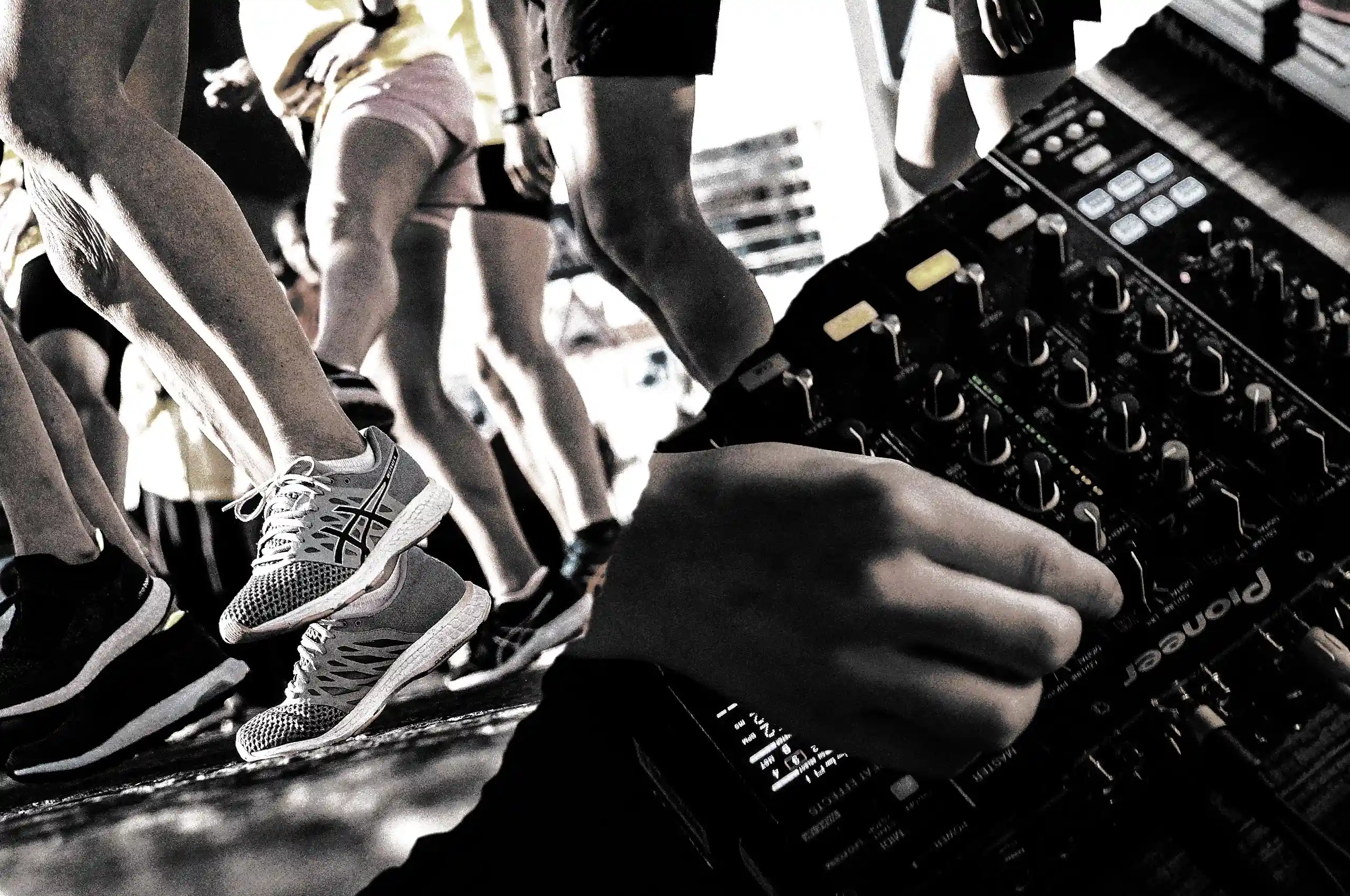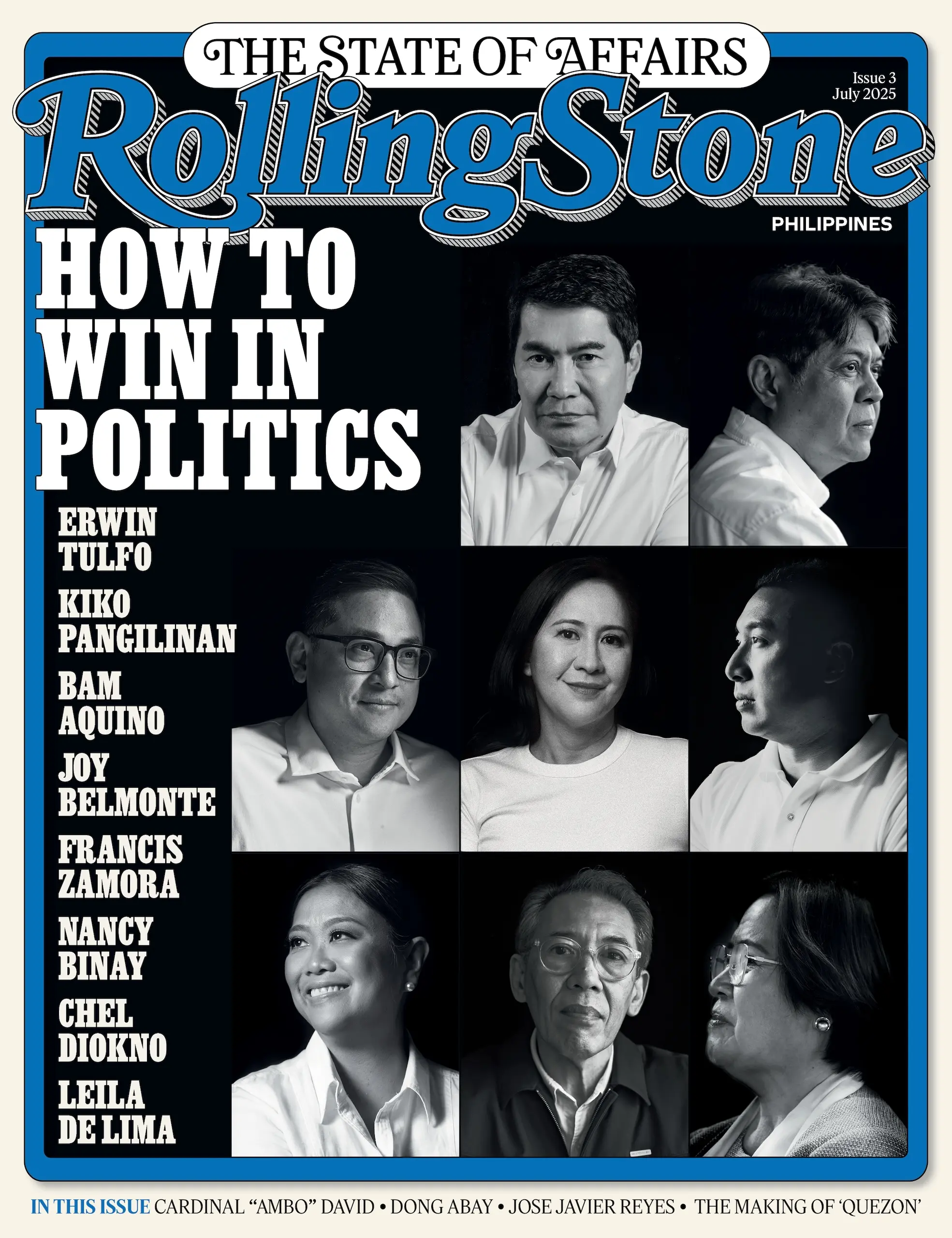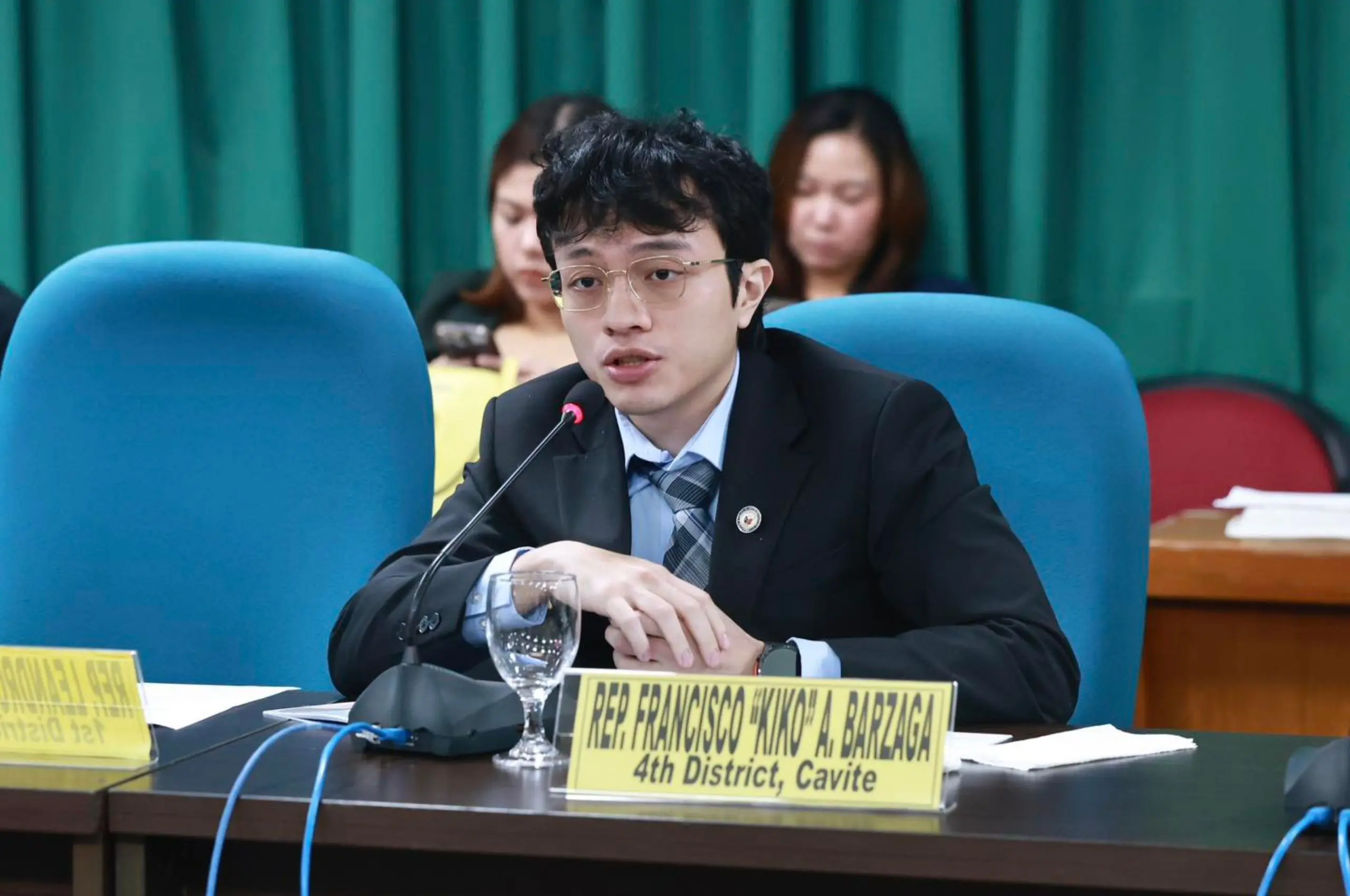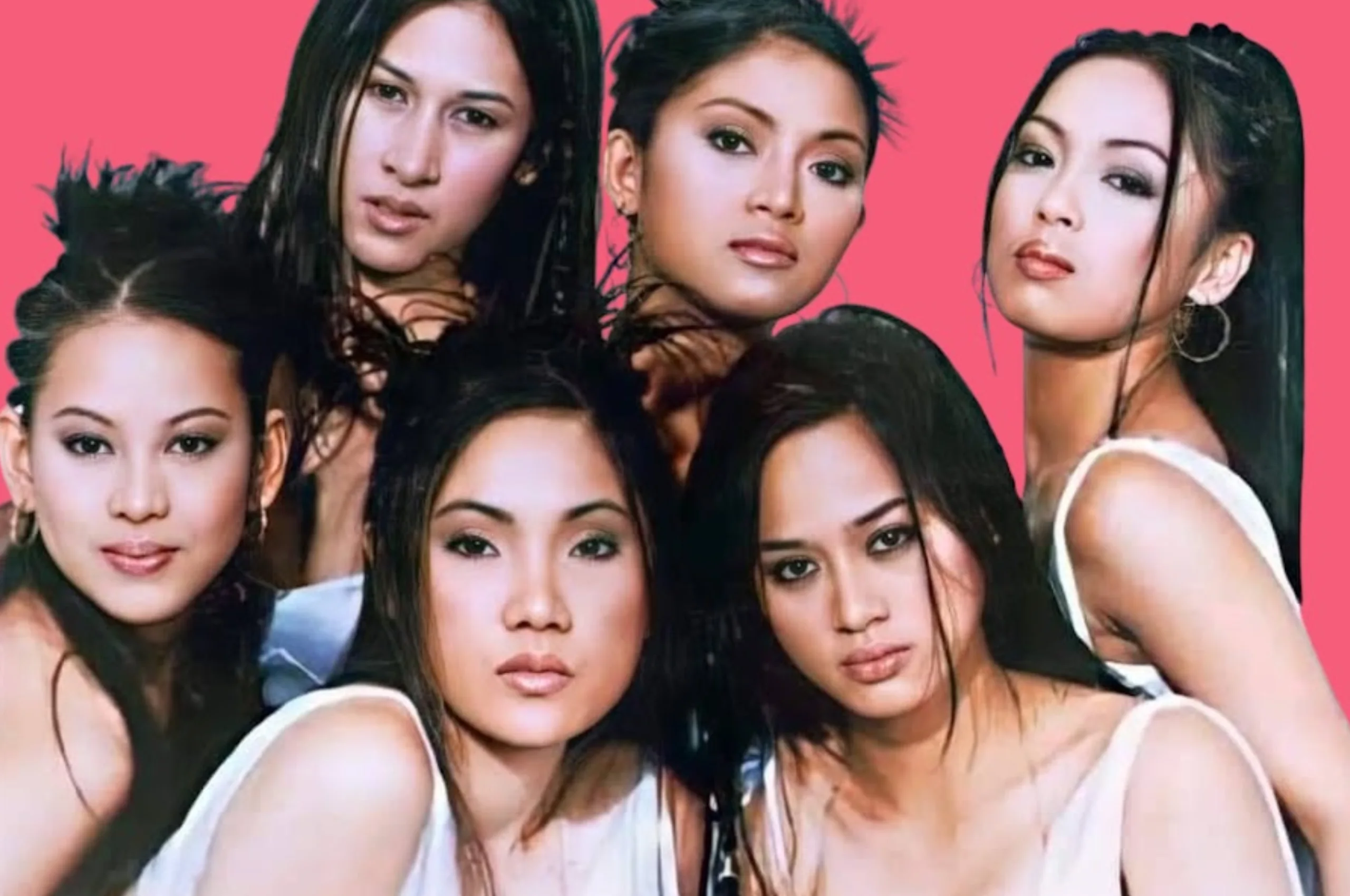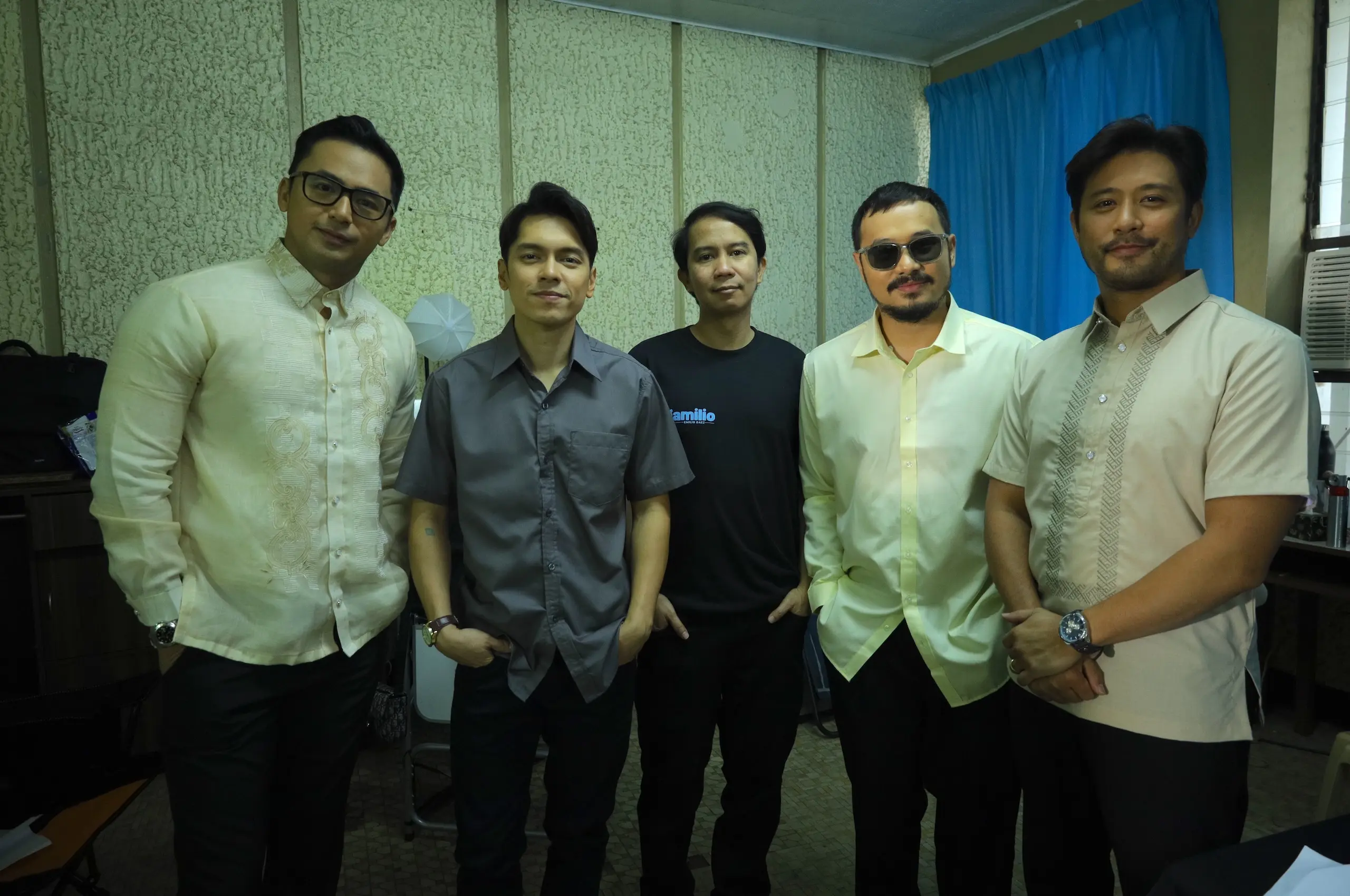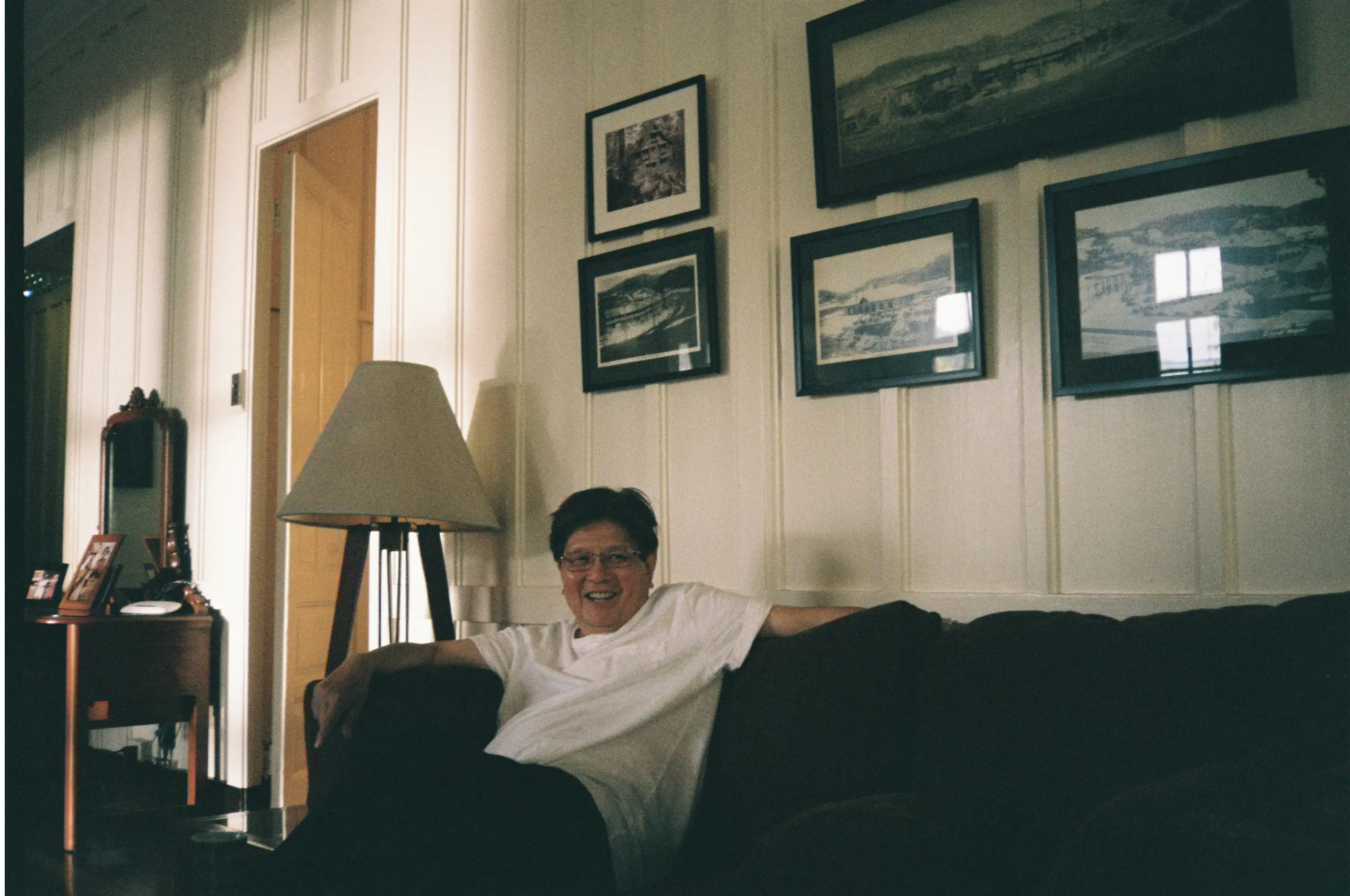Inside one coffee shop, you’ll find a sweat-drenched crowd fresh off a five-kilometer run, pulsing to the beat of a full DJ setup and spinning lights. Single Origin in Opus Mall, Quezon City — normally a quiet haunt for cortados and work-from-home calls — is crammed with people in compression tights and neon trainers. From a distance, the vibe could be mistaken for a morning flash mob or a warm-up for a fun run. But look closer: This is a full-on party, with some runners, like partygoers, using post-jog recovery as an excuse to flirt or go on dates. And like all parties, there is a DJ who isn’t just providing background music, but is considered the main event.
This is part of a global phenomenon of “coffee raves” — a loosely defined scene mixing endorphin highs, caffeine spikes, and dance music in early morning gatherings from all over the world. Coffee raves are billed as wellness events, post-run community builders, and ways to repurpose the clubbing experience for a generation more obsessed with Strava stats than sunrise hangovers. Since May, Google searches for coffee raves have reached an all-time high, while #coffeerave has amassed millions of posts and views across Instagram and TikTok.
But not everyone’s buying it. “Not for me. I’m an introvert in this kind of environment,” reads a comment under one viral video on TikTok. Another simply asks: “Can I just drink my damn coffee?”
The criticism cuts both ways. While one TikTok user lamented, “’Yong galing ng run tapos pawis mag aamoy sa loob,” another user comments that “’Yong nagkakape ka sa gilid in peace tapos ginawang La Union.” One person’s sunrise vibe sesh is another’s invasive party at what’s supposed to be a peaceful third space. Even more pointedly, the rise of wellness-centered raving, sponsored or otherwise, raises questions about what it means to “party” now. What is the new rave, and who is it really for?
A Sense of Belonging
For Ashley Cayuca, founder of Just Show Up Club (formerly Rockwell Run Club), the answer is simpler than the backlash suggests. Her take on coffee raves began as an organic extension of morning runs with friends in Makati. “I was watching [videos] like A.M. Radio,” she recalls, referring to the Los Angeles-based YouTube channel broadcasting morning DJ sets. “Then I thought, oh my gosh, why can’t we do this after a run since we’re already doing meetups in a cafe? This would be amazing. The community will love this.”
For her, it was about energy, and what to do with it after a run when the blood’s still pumping and no one wants to go home yet? “After a run, you think everyone’s tired and all, but you have more energy to move,” she says. “Wellness and music [have] always been connected. Both give you a high, right? So [with] running, they say, running high, right? But I think music is the same. It gives you energy. It motivates you. It gives you peace.”
Despite its former name, Cayuca insists her club isn’t limited to Rockwell’s elite or the gated runners of Makati. “The main reason we [had a] surprise rebranding during our anniversary last May — from Rockwell Run Club, to Just Show Up Club — is because lot of people are confused,” she says. “Daming nagsasabi na kailangan ba maging taga Rockwell? There were a lot of funny comments. But that’s why we removed the location, because we’re more than just the location now. They say if it’s Rockwell, it’s sosyal. But, for us, it’s not true.”
Riding high off the virality of their recent coffee rave at Angkan Coffee in Bonifacio Global City, they’ve expanded their plans beyond the pavement. They’re releasing an original album — yes, a run club with a record. “We are currently creating our own album. We have an artist. His name is Matthew Barbers and [he] creates amazing music,” she says. “It’s so important that [running music] is upbeat for me. So yes, we’re actually releasing music, which no run club has done yet. The title is Run Free.”
More Than Just The Music
In Poblacion, Makati, is another run club. Although it’s a few blocks away from Rockwell, it’s a universe apart culturally.
Sean Bautista co-founded Red Light Run Club with a different ethos in mind. Born from the reality that Bautista and his co-founder Melvin Sun couldn’t commit to early morning jogs, Red Light became an after-hours alternative — a space for the misfits who find peace in the night.
“We thought there was an opportunity to push this idea of doing the running thing, but not in the conventional way,” Bautista says. “Our members are also very alternative and very native to the Poblacion area: DJs, tattoo artists, gravel cyclists, photographers, painters. That’s the magic of the club, and we still attract that kind of creative community, not the conventional athletes.”
Bautista, who DJs under the name Duality, knows first-hand how lifestyle stereotypes lock people out of physical spaces. “There’s a very conventional idea of a DJ who parties, does nightlife, and doesn’t take care of his health,” he says. “There’s also the idea of a conventional athlete who’s just in tune with their body and doesn’t have fun. [Running and DJing] aren’t mutually exclusive. I guess the conventional notion of a DJ or an athlete — it looks, at first glance, like different worlds. But if you really think of what it means to be someone who’s interested in music or someone who’s interested in taking care of their health… They actually meet.” In fact, within dance music, there is a growing trend towards sobriety as dancers reckon with the unsustainability of poor health caused by nightlife.
When asked about coffee raves, Bautista doesn’t dismiss the format outright. He actually witnessed one of these morning DJ sets during a trip to New York City. “A place like New York, which is very liberal, really attracts these weird sort of ideas. So it’s not unfamiliar to me that [coffee raves] would happen. But I guess because of pandemic times, and the shifting attitudes towards drinking [among] younger audiences, the idea of recontextualizing DJ culture outside of nightlife has boomed again. For me, that’s pretty interesting.”
“There are ways for running culture to expand in different ways. But what we’re seeing right now is the commercial boom.”
Still, he isn’t convinced all run clubs have their heads — or hearts — in the right place. “I think people are still creating run clubs for more commercial reasons, [or] as a financial move,” he says. “There are some coaches who will start run clubs because that’s their ticket to getting sponsored. There’s also an element of run clubs being a source of social capital for people. That’s where it becomes a networking thing, and then a dating thing.”
In his view, the growth of run clubs isn’t slowing down anytime soon, especially in the Philippines where physical fitness and urban escapism are gaining cultural currency. Grassroots communities, Bautista notes, need to show up for more than just performance. “Wouldn’t it be interesting to see a run club more dedicated towards the FLINTA [Female, Lesbian, Intersex, Trans and Agender] or queer community?” he says. “There are ways for running culture to expand in different ways. But what we’re seeing right now is the commercial boom. They’re really annoying, brand-focused, superficial run clubs that are just doing it for scale.” Ultimately, the future of run clubs and how music fits into them won’t be shaped by sponsorship decks or viral videos alone. It’ll depend on how these clubs influence their communities, one pace at a time.
For now, coffee raves may split opinions. But underneath the neon tights, dance beats, and performance gear lies a culture in motion — part wellness, part rebellion, part something not yet fully defined. And like any good scene, it’s got its own rhythm. You just have to know where to listen.
“The attack of Red Light is always from a more underground or alternative perspective,” he says. “That’s how we view the clubs. It’s like differentiating between [nightclubs such as] Boogie, Apotheka, and The Palace. [They’re] all different things.”
CORRECTION: This story has been updated on June 19, 2025, to correct a previous version of this article, which mistakenly referred to a coffee rave in Single Origin being in Bonifacio Global City. This was, in fact, in Opus Mall, Quezon City.
